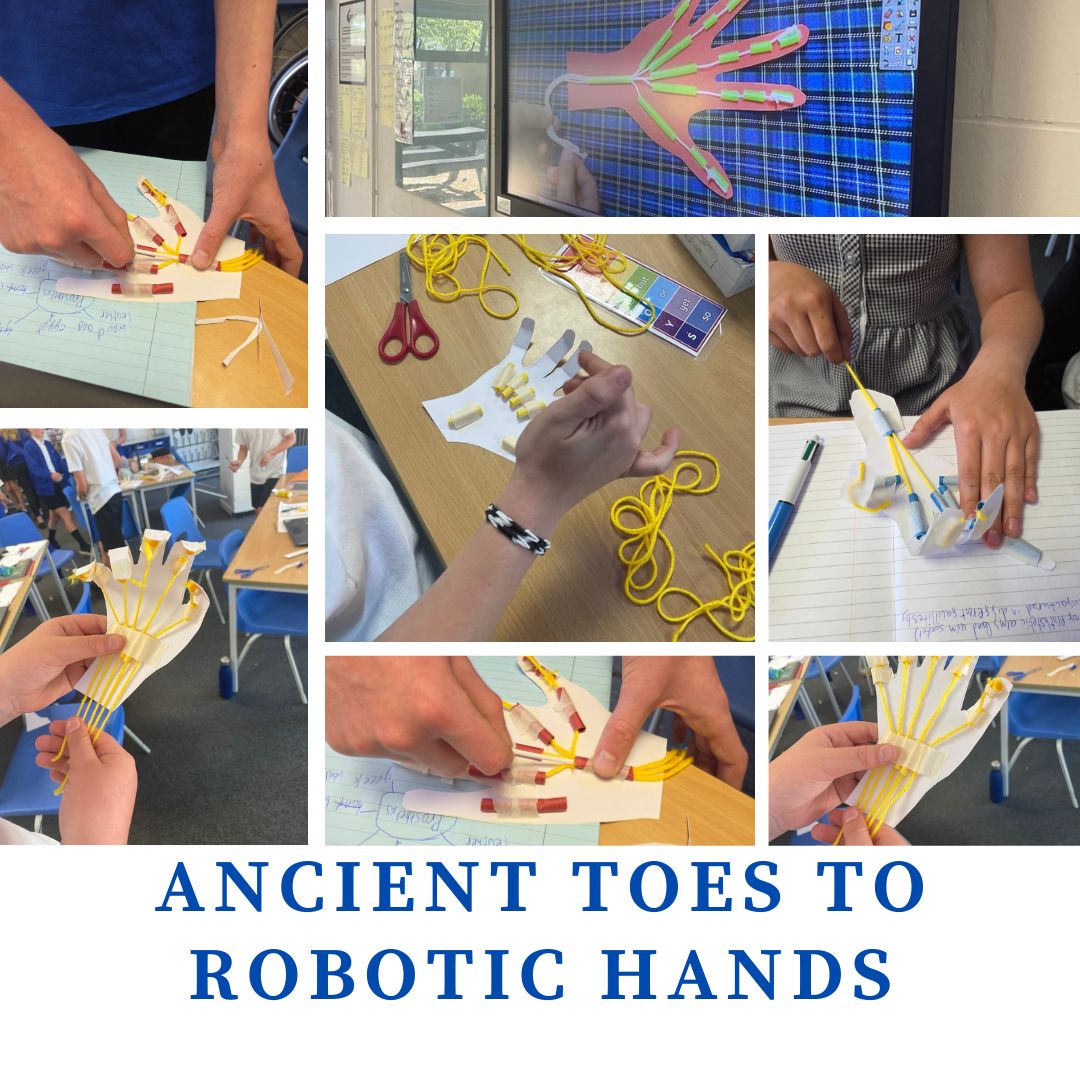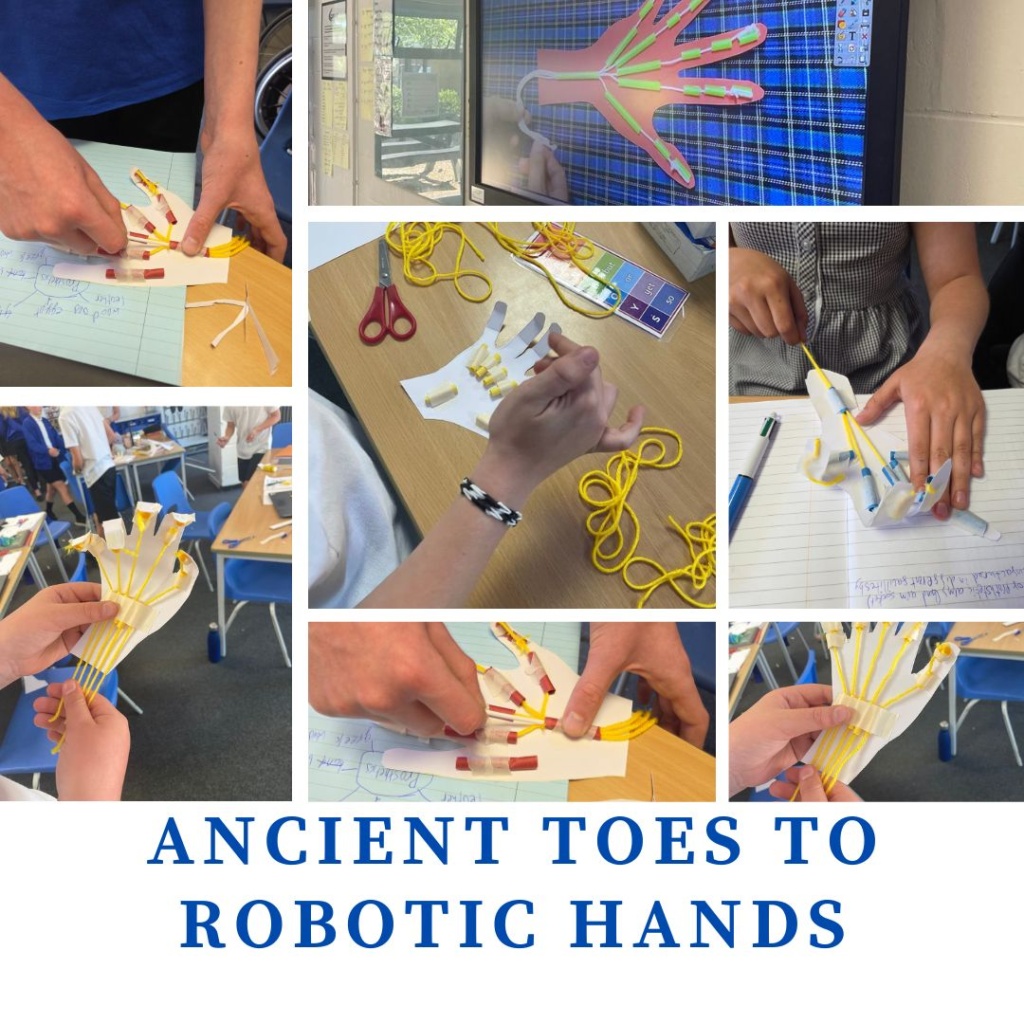
As part of our PD learning, Year 6 has been discussing body image: what this is, how it can affect people, and what factors may play a part in people’s perception of themselves. As part of this unit, we delved into the topic of prosthetics. The pupils were able to describe what they thought prosthetics were, and give some reasons as to why people may decide/need to have prosthetics, so they were then set the task of finding out when the earliest prosthetics were used. Did you know that the earliest prosthetics are thought to date back to Egyptian times, where prosthetic toes have been found on some mummified remains!? The Romans also have evidence of using prosthetics, as soldiers who were wounded in battle, would often be given prosthetics to enable them to re-enter the battlefield.
Of course, the prosthetics back then were nowhere near as advanced as the prosthetics we have nowadays. We discussed and looked at some examples of prosthetics through the course of history, and agreed that the earliest prosthetics did not look particularly comfortable, being made from heavy wood and strapped to your body. We were amazed to see that, even some of the earliest prosthetic arms, had working, movable joints in the wrist and fingers, which led us to create our own prosthetic arms using card, straws and string! It was a challenge, and fiddly at times, but Year 6 persevered and their prosthetic hands really did work!
We will further this learning next time by using the LEGO Spike kits to create robotic, coded prosthetic arms that can actually help us to pick things up!
